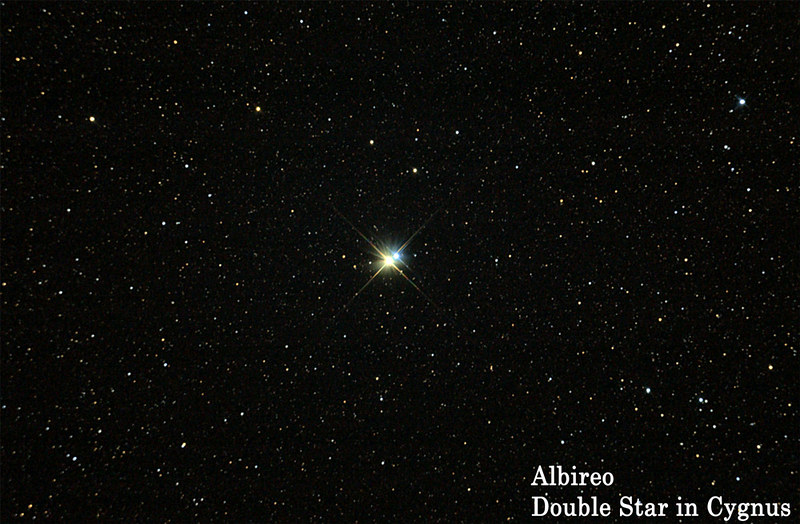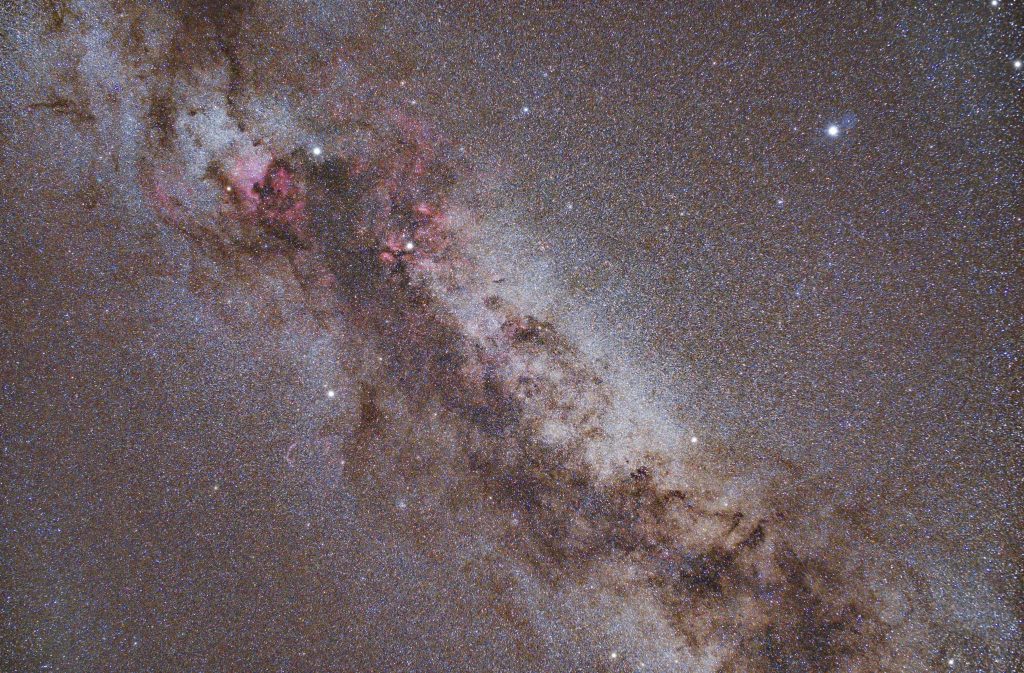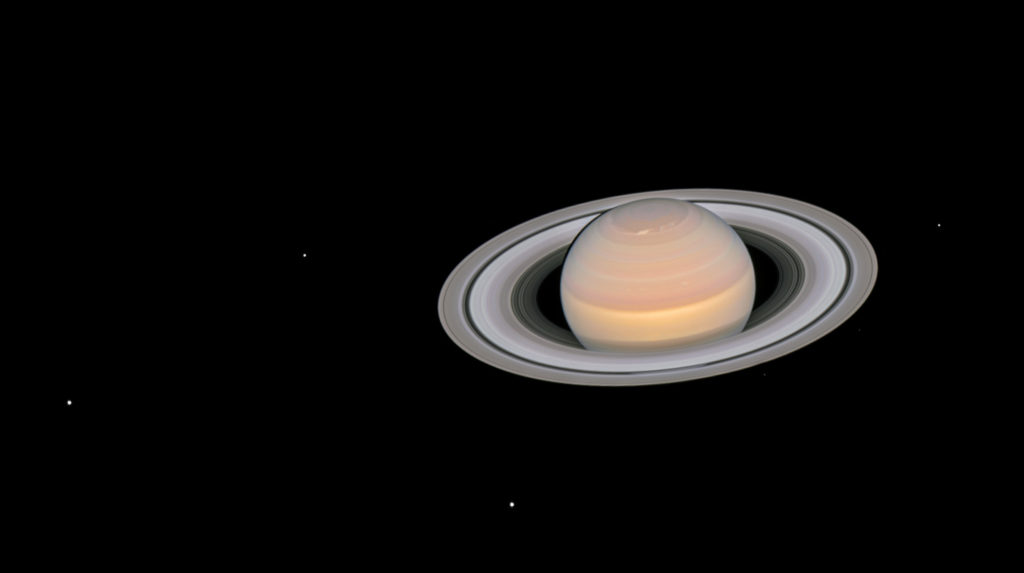
Every picture tells a story, and this wide-field image of the northern Milky Way in Cygnus and Cepheus, which spans nearly 16º on each edge, surely has a lot going on.
To the upper right of this image, you see the blossom-like emission nebula IC1396 in Cepheus with the aging red-orange star μ Cephei, the ‘Garnet Star’, on its limb. Plenty of stars are forming within this stellar nursery.
At the upper left, you see the tiny blossom of the Cocoon Nebula (IC 5146), another stellar nursery at the end of a two-degree-long dark nebula Barnard 168, both set in a rich field of background stars.
Moving down the left side of the image you see more nebulosity culminating in the unmistakable North America Nebula (NGC 7000) and the neighbouring Pelican Nebula (IC 5070) below, both of which encompass more active regions of star formation. Various patches of dark dust and distant star clouds, especially the square formation above NGC 7000 also lie within this wide view, as does the bright star Deneb at the tail of Cygnus, the Swan.
But the showpiece of this image is notable for its lack of light. Just right and below centre you see the vast and irregular void of a cloud of gas and interstellar dust known as Le Gentil 3 that comprises an immense conglomeration of star-making material in the early stages of giving birth to dozens of new star clusters.
[Read more…] about A Deep-Sky Vista and the Dark Nebula Le Gentil 3
Share This:

